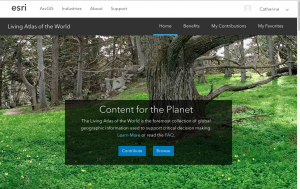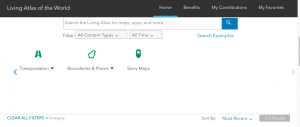According to Edelson (2001) the Learning for Use Framework (LfU) incorporates several components that bring real world examples into science and math classes most often using technological developments to support learning. Edelson (2001) and his colleagues “believe that if we are able to present schools with compelling examples of the use of computers to achieve ambitious science education standards, the introduction of computers into schools will become an opportunity to engage those schools in science education reform (p 356).”
The goal of LfU is to incorporate real life problems into learning activities so that the material becomes meaningful and students are better able to recall what they have learned when it is relevant (p 356). The LfU model is based on four principles that incorporate constructivism, constructionism and situated cognition:
1. Learning takes place through the construction and modification of knowledge structures.
2. Knowledge construction is a goal-directed process that is guided by a combination of conscious and unconscious understanding goals.
3. The circumstances in which knowledge is constructed and subsequently used determine its accessibility for future use.
4. Knowledge must be constructed in a form that supports use before it can be applied. (p 357)
The LfU model involves the processes of first-hand experience and understanding built on communicating with others. It is important to note here that these methods are not necessarily orderly and discrete but rather a “continuous, iterative, often cyclical process that consists of gradual advances, sudden breakthroughs, and backward slides (p 377).”
I feel this is an important concept for teachers to embrace. Over the past few decades, we have created generations of students who just want to know how to do something “right”. It is a mindset of “tell me, show me, grade me’ ok let’s move on”. Students are leaving school with very little problem-solving ability and poor critical thinking skills. Why? Because that is how they have been trained. Unfortunately, they are entering a work force that is no longer industrial based. Employers are looking for workers who can solve real-world problems, think critically about best scenarios and work together in collaborative groups. Most graduate’s skills are lacking in these areas.
As educators, it is up to us to realize that although not all our past pedagogy is bad it does need updating. Technology integration may be the key to bringing constructivism and situated cognition into our everyday lessons. Bodzin, Anastasio and Kulo (2014) [Designing Google Earth activities for learning Earth and environmental science] recognize the limitations we have all discussed in previous blog posts: “There have been many challenges, however, to implementing geospatial technologies in K-12 classrooms. These include technical issues pertaining to the interface design of software, time for classroom teachers to learn to use the software, lack of existing basal curriculum materials that integrate geospatial technologies, and lack of time to develop learning experiences that integrate easily into existing school curricula (Meyer et al., 1999; Baker & Bednarz, 2003; Bednarz, 2003; Kerski, 2003; Patterson et al., 2003.” They still believe geospatial technologies hold great promise for classroom use (p 3). Bodniz et Al. (2014) outline nine design, scaffold and use steps that are collaborative and student centered to create meaningful activities for students using geospatial technologies (see article p 17).
The article by Radinsky, Oliva and Alamar (2009) Camila, the earth, and the sun: Constructing an idea as shared intellectual property takes this design process even further by centering learning around shared cognition. The authors state, “we need to develop ways to recognize and assess emerging science knowledge in classrooms not only as individual accomplishments but also as shared processes and communal understandings. The present study is an effort in this direction (p 620).” They highlight 6 scaffolded steps referred to as moves to incorporate this learning into the classroom.
Move 1. Reviewing Shared Assumptions: Starting from What ‘‘Everybody’s Thinking’’ (p 628).
Move 2. Referencing Other Students’ Work (p 629).
Move 3. Combining Separate Ideas in to a Shared’ ‘Common Ground’’ (p 630).
Move 4. Creating and Inspecting Multiple Shared Representations (p 631).
Move 5. Leveraging Peers’ Language to Clarify Ideas (p 631).
Move 6. Negotiating Language and Representations to Develop New, Shared Explanations (p
632)
After reading several of the articles this week I spent a few days mulling over how I see LfU and geospatial technologies being integrated into my lessons. Initially, I thought I would struggle to find units or modules that would fit as the concepts seemed to be too advanced. I immediately changed my mind as several good fits emerged simultaneously, suddenly I was overwhelmed with ideas.
The idea I have thought about the most is an integrated curriculum unit that is hinged around science and social justice. In a MET course, last term my partner and I developed a Google Classroom unit for a grade three students (but could be adapted to any grade level) on Testing Materials and Design. Geospatial technology could be incorporated easily into this unit. In the module 6 activities A) Build a better amusement park and B) Imagineering a cross curricular blended learning module geospatial activities could be added. For the first activity Build a better amusement park students could use any of the geo technologies to look for an area that they could build on. Is the terrain suitable, is there enough space, is there room for growth and so on?
For part B students are introduced to the Boy Who Harnessed the Wind: William Kamkwamba. William used his knowledge of science, his imagination and found materials to create a windmill for his town. He harnessed the only natural resource available and used it to better the lives of the villagers. Students could use Google Earth technology to view the African landscape and look for other suitable locations to build wind turbines, or perhaps look at ways to harness water or the sun to base their Imagineering project on. My mind is literally teeming with ideas as I write this.
The benefit of the LfU approach utilizing geospatial technology to teach earth sciences is that students can actually see what they are learning. They are able to manipulate variables and “see” the outcome. They are able to look at real world, real time images and understand changes to landscapes whether that be in relation to human interaction such urban expansion, natural disasters (areas of a city devastated by an earthquake) or the displacement of refugees due to civil unrest. With out technology, there is no “seeing” but rather students are expected to visualize these images with no real life context to compare them to.
A few years back our local newspaper did an educational ten part story on social justice titled “A Long Walk to Water”. The grade eight teachers used it in their classes. While an interesting read, the students, living in middle-class Ontario Canada, could not comprehend the issues facing the young women in the story. Teachers were frustrated that the unit seemed to be flopping and could not understand the lack of connection and general “who cares” attitude of the students.
In one of our Social Justice club meetings kids talked about the story and how even they, students interested in social justice could just not align this with their own lives and understandings of the world. From this discussion we started looking at new activities.
We tried to bring real world connections to the classroom; we went on the computers and looked at the area involved. Looked at the temperatures and terrain, the political instability in the area. The issue that girls were expected to be slaves while boys went to school. While the story was called Long Walk to Water, the students didn’t understand what long meant. We used google earth to track their walks, and put it in relation to our community. We borrowed large water jugs from a nearby business and filled them so students could feel how heavy the water jugs were. To bring it all together we had the grade eight students carry the filled jugs on a social justice walk. Even though the distance our students traveled was relatively flat and safe and less than half the distance that the girls in the story travel each day, most of our students could not make the journey with out stopping, whining and generally wanting to give up.
When students did need to stop the members of the social justice club would go up and remind them that there were kidnappers and bandits around and that stopping meant they were sitting ducks. Some students were inclined to leave their jugs and they were reminded if they did there would be no food or water at home for the entire family including young siblings and babies. Doing all this helped the students make the connection, and for most appreciate how their lives differed from others around the world.
References:
Bodzin, A. M., Anastasio, D., & Kulo, V. (2014). Designing Google Earth activities for learning Earth and environmental science. In Teaching science and investigating environmental issues with geospatial technology (pp. 213-232). Springer Netherlands.
Edelson, D.C. (2001). Learning-for-use: A framework for the design of technology-supported inquiry activities. Journal of Research in Science Teaching,38(3), 355-385
Radinsky, J., Oliva, S., & Alamar, K. (2009). Camila, the earth, and the sun: Constructing an idea as shared intellectual property. Journal of Research in Science Teaching, 47(6), 619-642.
Sverko, C. and Roffey, T. Google Classroom Unit: Testing Materials and Design created for ETEC 565A December 2016.


